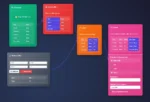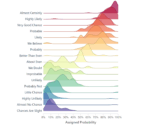In today’s data-centric landscape, organizational leaders grapple between balancing powerful analytics with user privacy and compliance. The ever-growing wealth of information at our fingertips offers unparalleled opportunities for insights and innovation, yet simultaneously introduces complexities around safety, consent, and confidentiality. At the crossroads of these opposing forces lies synthetic data bootstrapping—a transformative solution leveraging advanced computing methods to generate statistically representative datasets entirely from scratch. By harnessing sophisticated analytics methodologies, synthetic data provides a safe and innovative approach to enabling highly effective analytical operations without compromising privacy. Forward-thinking organizations increasingly partner with specialized analytics providers to navigate these complexities seamlessly, such as integrating robust APIs like our expertise with the Procore API Consulting Services. Let’s explore how synthetic data bootstrapping reshapes analytics workflows, maximizes privacy preservation, and revolutionizes business insights.
Understanding Synthetic Data Generation and Bootstrapping
At its core, synthetic data generation involves creating artificial datasets that replicate the statistical characteristics, trends, and patterns found within real-world data. Unlike anonymizing real data—which can inadvertently risk the identification of individuals due to re-identification techniques—synthetic datasets are entirely fictional. Yet, they remain statistically identical enough to support reliable analytics efforts. Bootstrapping in this scenario means that businesses equip their analytic operations with robust, reusable synthetic datasets that can feed multiple analytics processes, simulations, and machine learning models.
Synthetic data creation utilizes sophisticated statistical techniques, machine learning models such as Generative Adversarial Networks (GANs), and deep neural networks to generate high-quality data that closely imitates original datasets. Organizations that invest in synthetic data not only enhance privacy but also significantly reduce time-consuming data cleansing and anonymization routines. Moreover, with great flexibility to adjust the parameters of generated data, companies can simulate diverse scenarios or stress-test models without risking sensitive or regulated information exposure.
Leveraging synthetic data bootstrapping effectively complements other analytic strategies such as interactive dashboards and visual analytics—enabling data teams to develop robust, privacy-aware insights quickly and efficiently. Beyond security and compliance benefits, synthetic data accelerates the innovation lifecycle, fosters faster experimentation, and significantly improves operational agility.
Why Synthetic Data is Essential for Privacy-Preserving Analytics
Privacy-preserving analytics have become vital for organizations navigating regulatory compliance, including GDPR, HIPAA, and CCPA, while still pursuing meaningful analytic insights. Traditional anonymization methods—like stripping names or identifiers—no longer sufficiently safeguard the privacy against advanced re-identification techniques. Synthetic data fills this gap by offering datasets entirely disconnected from actual user identities or proprietary business data, rendering re-identification impossible.
Another key advantage is the minimization of compliance risks. Privacy regulations often limit or control data-sharing practices, placing restrictions on organizations using sensitive real-world data externally. Synthetic data sidesteps data-sharing constraints, enabling safe data collaboration across enterprises, departments, and geographic boundaries. This benefit drastically empowers cross-functional innovation without compromising sensitive user information or intellectual property.
For instance, organizations seeking advanced financial insights without breaching payment details privacy might turn to synthetic data generation—unlocking the true potential of analytics, as previously explored in the power of big data within fintech. Similarly, using synthetic datasets to complement internal datasets strengthens analytics processes, helping data teams move beyond traditional boundaries and safely collaborate externally.
Best Practices for Implementing Synthetic Data Bootstrapping
Successfully incorporating synthetic data into your analytics workflow begins with aligning stakeholders on its strategic advantages and aligning adoption with clear organizational objectives. Begin by establishing robust data governance that documents the source data distribution clearly and ensures that the synthetic datasets remain faithful and statistically reliable. Transparency across data generation processes builds credibility within analytics teams and instills organizational confidence.
Next, select tools and methodologies aligned with organizational requirements, regulatory needs, and the actual real-world distributions of your source data. Invest in specialized training and educational workshops to promote team understanding and adoption of synthetic data bootstrapping methods. Effective communication and close collaboration through structured working sessions—such as those defined in our article on improving analytics project outcomes via structured working sessions—ensure clear alignment across multiple business units.
Additionally, validating synthetic data quality and statistical accuracy is crucial. Analytics teams must regularly benchmark synthetic datasets against real datasets to guarantee consistency and ensure analytical outcomes match internal expectations. Leverage advanced analytics techniques and robust quality assurance procedures, like those explored in our guide on using SQL effectively, Select Top statement in SQL, for efficient validation routines.
Advantages Synthetic Data Offers Over Traditional Approaches
Traditional analytics frequently rely on real-world data alone, bringing two main challenges: high compliance risk exposure and intensive, often tedious data anonymization processes. Synthetic data removes considerable layers of operational and financial burden by eliminating these barriers through a privacy-guaranteed approach. Reducing the reliance on real-world data and its associated consent and anonymization compliance enables teams to address actual business questions faster and more confidently.
Synthetic data also offers a flexible, innovation-friendly environment. Businesses can artificially generate rare event scenarios at scale, helping teams develop comprehensive analytics solutions rarely achievable with traditional datasets alone. This method is particularly crucial for predictive analytic modeling, scenario testing, and innovation within complex legacy or integrated environments—challenges we unpack in our article on innovating without replacing legacy systems.
Consider also synthetic data’s capacity to enhance the user experience and internal morale. Traditional analytics commonly burden teams with slow data access or challenging compliance hurdles, limiting creativity, scalability, and flexibility. Conversely, reducing manual, repetitive anonymization routines can boost employee morale and retention, shared extensively in our exploration about lowering dependency on Excel tools to improve operational efficiency.
Applications and Industries Already Benefiting from Synthetic Datasets
The financial services sector is an excellent example of synthetic datasets delivering immediate, practical value. Compliance regulations and heightened privacy concerns regularly impede analytics potential. Synthetic data changes this dynamic entirely, allowing fraud detection modeling, rapid stress-testing of algorithms, risk-modeling scenarios, and predictive analytics without any compromise associated with handling personal or confidential financial IDs.
Furthermore, healthcare institutions harness synthetic data bootstrapping increasingly effectively, streamlining analytics processes related to patient outcomes, medical diagnosis scenarios, epidemiological studies, or drug development. The same scenario-driven analytics powerfully guides decision-making and simplifies executive understanding, similar to the power harnessed in strategic executive dashboard implementations.
Marketing and social media analytics efforts underscore another key arena. Companies leveraging synthetic, privacy-preserving datasets can better understand customer behaviors, segmentation, and personas without risking privacy concerns, supporting better social and marketing analytics initiatives as detailed in our recent article on the benefits of leveraging social media data for business insights.
Conclusion: Synthetic Data, Analytics Innovation, and Privacy Future-Proofing
In our rapidly-evolving analytics landscape, synthetic data bootstrapping emerges as an indispensable solution to privacy-preserving analytics strategies. By eliminating compliance concerns and reducing cost-intensive anonymization processes, it unlocks unparalleled analytical potential in industries impacted heavily by privacy regulation. Synthetic data allows decision-makers, strategists, and analytic teams to rapidly evolve analytics models, explore new opportunities, and innovate authentically.
Focusing on mastering effective strategies around synthetic data generation will future-proof analytics operations in terms of regulatory compliance and sustained innovation. Forward-thinking organizations should partner with expert technical strategists proficient in leveraging the most advanced data-visualization techniques—covered extensively in our comprehensive data visualization overview guide.
Make synthetic data bootstrapping an essential addition to your analytics toolkit, and reap the rewards of privacy-aware, regulation-proof, rapidly scalable analytics innovation.



















